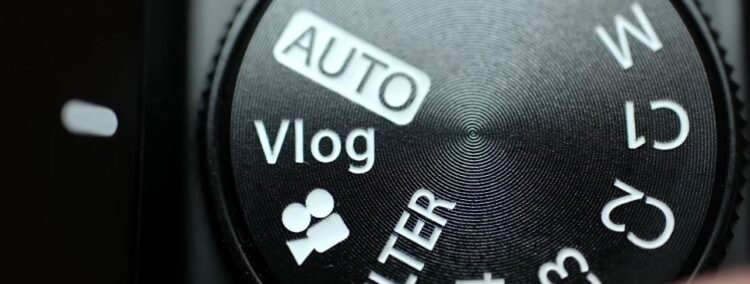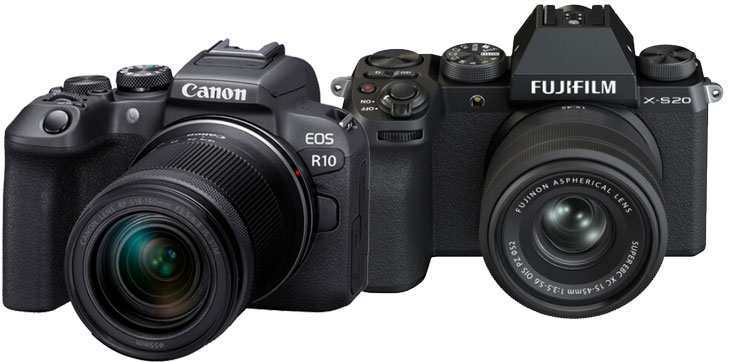
Let’s compare the body design of both cameras. Both are very well built and made for professional shooters with a very deep hand grip and EVF. They are paired up with a variable-angle display screen to give you compositional freedom. Whether you are a photographer or a content creator, you will love the camera’s design.
1. EXTERNAL FAN
The additional advantage we have with the Fuji X-S20 camera is the ability to add an external fan in case of overheating. The external fan will lower the temperature and allow you to record more than double the available recording time.
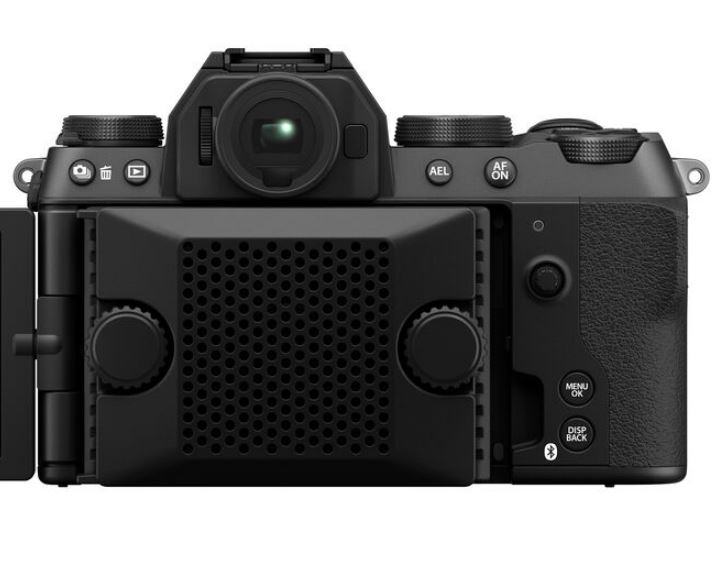 With the Fuji X-S20 camera, we are getting dual 3.5 mm ports; one is for headphones and the other is for a microphone. The microphone port can also be used as a remote shutter port.
With the Fuji X-S20 camera, we are getting dual 3.5 mm ports; one is for headphones and the other is for a microphone. The microphone port can also be used as a remote shutter port.
2. EXTENDED BATTERY LIFE
We should discuss this in the design part. We have a larger battery in the Fuji X-S20 camera. The battery allows you to capture approximately 700-800 Liveview shots in a single charge, which is double when compared to the battery life of the Canon R10 camera.
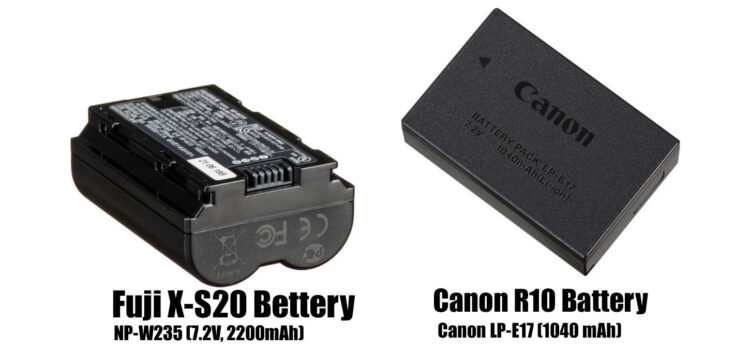
3. VLOG MODE
In vlog mode, we have a dedicated vlog mode in the camera. When you switch the mode dial button to vlog, a new content creator menu pops up. In the content creator menu, you will see 6 different blocks with different modes, including product showcase mode and face tracking priority mode made only for content creators. No content creator or cinematic menu is present in Canon R10.

Let’s talk about the internal core specification of the camera
4. SENSOR
Sensor: The Fujifilm X-S20 camera features Fuji’s popular 26-megapixel sensor. The sensor is a BSI CMOS sensor, not an FSI CMOS sensor like that of Canon R10. So while having a BSI CMOS sensor, we do expect better low-light performance with the Fujifilm X-S20 camera.
Let’s have a look at a quick high ISO test between the two. A sample captured at ISO 25600 of a Canon R10 and Fuji X-S20 camera clearly shows the advantage of having a BSI CMOS sensor while capturing images in low light.
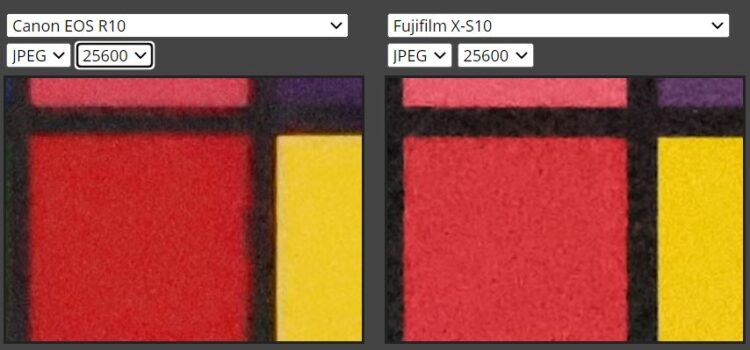
From the high ISO test, it is very clear that Canon is not able to preserve the color details at high ISO range when compared to a Fuji sensor.
The next is autofocusing performance. Both Fuji and Canon are using their latest generation of image processors
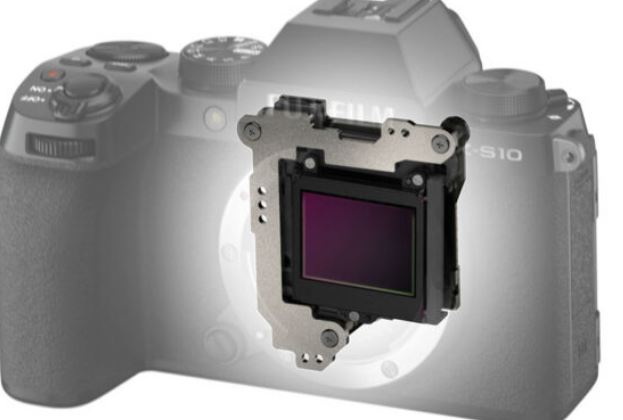
5. IMAGE STABILIZATION
In the Fujifilm X-S20 camera, we are getting sensor-shift image stabilization system up to seven stops. Not only that, for the first time in a Fuji camera, we have a dedicated menu to adjust the image stabilization setting according to our needs. No sensor-shift image stabilization system is present in the Canon R10 camera
6. BURST MODE
The next visible difference between these two cameras is the burst speed or the continuous shooting speed. With the Canon R10 camera and its 24-megapixel resolution, you can achieve a burst speed of up to 24 frames per second. With the Fujifilm X-S20 camera, the maximum burst speed available is 30 frames per second with crop and without crop at full resolution up to 20 frames per second.
While using the mechanical shutter, the Canon R10 allows you to capture 12 frames per second and the Fuji X-S20 camera allows you to capture 8 frames per second.
Buffer memory of Fuji X-S20 camera is more compared to Canon R10, its clearly visible in the table below.
| Fuji X-S20 | Canon R10 | |
| 10 FPS | 1000+ JPG — 341 RAW | |
| 15 FPS | 460 JPG — 29 RAW | |
| 20 FPS | 256 JPG — 79 RAW | |
| 23 FPS | 70 JPG — 21 RAW | |
| 30 FPS (1.25x crop) | 407 JPG — 88 RAW |
7. AUTO-FOCUSING SYSTEM
Canon R10 arrives with its popular second-generation dual pixel CMOS autofocusing sensor and more than 5000 autofocusing points fabricated inside the sensor. Furthermore, the camera uses 3700 DPAF points while recording video. To simplify it for its users, Canon grouped the points into 651 autofocusing zones.
Now, the Fujifilm X-S20 camera may not be able to match the number of DPAF points, but for the first time, it uses the most advanced artificial intelligence tracking system available inside Fuji. Fujifilm engineers directly used the artificial intelligence AI algorithm of the Fuji X-H2S camera in the Fuji X-S20. This AI enhances the overall performance of the camera and now the camera is even able to track moving drones and insects without an issue. The X-S20 now also features product showcase mode and face AF tracking priority mode.
So more or less both of these cameras have their own advantages and disadvantages when it comes to autofocusing performance.
8. VIDEO
The Fujifilm X-S20 camera is able to shoot 6.2K open gate in 3:2 format at the rate of 30 frames per second. So that’s the maximum resolution available in the Fujifilm X-S20. Now when you want to record in a standard format, that is in 16:9, the resolution drops to 5.2K. So that’s the maximum standard resolution available inside the Fujifilm X-S20 camera. None of these high-resolution modes are available in Canon R10.
The Fuji X-S20 camera is able to record uncropped 4K 60p video as well as full HD videos at the rate of 240 frames per second. Canon R10 fails to impress us as we have to face a 1.6x crop while recording 4K 60 frames of video. At the same time, only a 120 frames per second option is available at full HD format inside Canon R10.
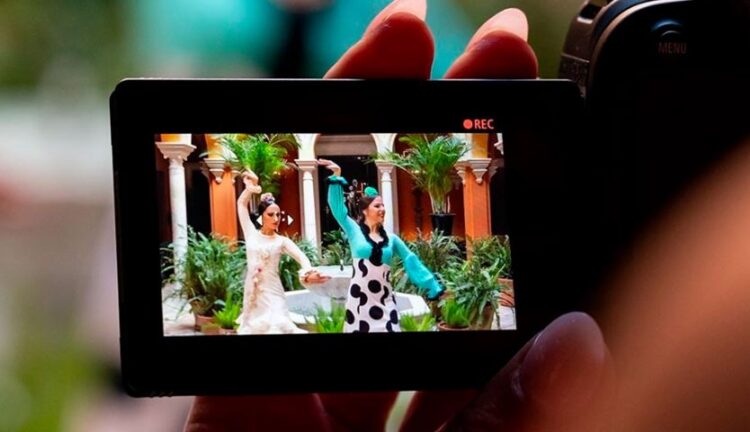
And the biggest difference that will shock you is that no C-Log format is available. Yes, you are able to record 10-bit only in HDR PQ mode in Canon R10, whereas in the Fujifilm X-S20 cameras F-Log and F-Log 2 are both available. In F-Log 2 curve, you are able to extract 13+ stops of dynamic range and at the same time, a 12-bit raw output is available via the HDMI port.

For content creators, we have a dedicated content creator menu and again dedicated autofocusing modes. Not only that but the advanced cinematography and content creation are being backed by the sensor-shift image stabilization of the camera.
For super cinematographers, content creators, and wedding videographers, the Fuji X-S20 camera is the best choice.
So for cinematographers containing creators and wedding video graphs for Fuji x as 20 cameras is the best choice
9. LENSES
Fujifilm X-mount is an open mount and we have a huge range of lenses available and more are coming. At the same time, the Canon RF mount is a locked mount and has a very limited range of lenses available for the APS-C range. If you move towards the DSLR lenses, then you have to be very careful while picking them up since the lenses with STM motors are fully compatible and the older lenses with USM motors will create noise, and not all of them are optimized for dual pixel CMOS autofocusing sensor
10. PRICE DIFFERENCE
We do have a good price difference between these two cameras. If you are on a very tight budget and not able to spend extra on lenses, then you may stay with the Canon R10 camera. But if your budget allows, I highly recommend you to get the Fujifilm X-S20
Fuji Film X-S20 – Camera $1299 [Body Only B&H] [Amazon.com] | 15-45mm Lens $1399 [B&H Store] [Amazon.com]
Canon R10 – Camera body $879 [B&H Store] [Amazon.com] | 18-45mm Lens [B&H Store] [Amazon.com]


